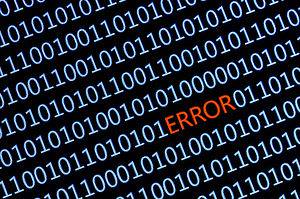
What Product Characteristics Are and Why They Matter
Updated:There are some set characteristics that make something what it is. We look for common characteristics that make a door a door. We look for certain characteristics in order to be able to call a type of vehicle a car. There are set characteristics for most common things that, when looked at together as a […]
Read more
Controlling Causes for Effective Problem-Solving
Updated:Early on in our educational development, most of us received a simple worksheet that explained cause and effect. The importance of what causes are and the effects that come from them did not end in childhood but is important as an adult too, especially in the business world. Knowing what the causes are for the […]
Read more
Streamline Operations with a Decision Rights Owner
Updated:Businesses need structure in order to operate properly. This need for structure extends into nearly all aspects of an organization, including who holds the decision rights. In your organization, it is necessary for the procedures behind how processes and projects are implemented to be clear and definitive. Choosing the appropriate owner of the decision rights […]
Read more
The Difference Between Correction and Corrective Action in Business Problem-Solving
Updated:Problems are going to arise in business, but the companies that succeed in the long term are those that find the true causes of those problems and find ways to keep them from happening again. When an issue occurs, the inclination is to stop it quickly. While this is fine, it is important to actually […]
Read more
How to Use Bar Charts Effectively
Updated:Bar charts are one of the most common ways to display information in a visual format, so it’s a popular choice in all kinds of media. Most business presentations have at least one of them in the mix and they are scattered throughout most high school textbooks. That’s why the ability to comprehend and use […]
Read more
What Every Manager Should Know About Back-Dating
Updated:Back-dating is like starting at the center of a maze and working your way outwards instead of starting at the normal exterior point. This term describes a type of scheduling process entirely oriented around established dates for final deliverables. Back-dating may seem like doing things backwards, but it’s actually the logical and often necessary perspective […]
Read more
Best Practice
Updated:When determining how to apply Six Sigma methodology to your business, you do not need to reinvent the wheel. A lot of research, testing, and work has already been put in to sort out some common best practices that are proven to work for most organizations. In any industry, there are others that have come […]
Read more
Bugs: Guide to Detection and Prevention
Updated:Finding bugs during the testing phase of software is paramount to making sure customers receive a product that works as it is intended to.Having bugs in software is not uncommon. It is, however, extremely important to do rigorous testing to find them ahead of the release of the software or product to the public. Overview: […]
Read more
What Every SS Practitioner Should Know About Business Requirements
Updated:Every business is unique and has its own requirements for meeting its definition of success. Being able to list the requirements of your specific organization provides a clear picture of the needs for your company’s success and can aid in the planning stages of the projects required to meet goals. There are needs and then […]
Read more
Discover the Power of the Capability Maturity Model in Software Development
Updated:The capability maturity model (CMM) was conceived during the 1980s as a way to improve the way US government departments interfaced with technical contractors. The rapid onset and development of computer technology forced many agencies, including the Department of Defense, to develop a new model to adapt to the more demanding and fast-paced nature of […]
Read more
Finding Your Competitive Advantage
Updated:With any business, it is important to be able to separate yourself from the competition to gain an advantage. This can be anything from running your operations with greater efficiency to being able to differentiate the attributes of your product from those of your rivals. Having a competitive advantage and being able to maintain it […]
Read more
Circumstance Matters: Understanding the Importance of Context in Probability
Updated:Probability is defined as how likely a particular event or outcome is. When there is an impactful workplace event, you will likely want to examine the probability of it occurring again, whether that event is positive or negative. In order to reasonably determine future probability, one must look at the circumstances surrounding the event. Almost […]
Read more
Authority
Updated:In any business arrangement, it is necessary to know who exactly has the power to make decisions. This is true for everything from approving a sale to granting the request for a change in a process be implemented. Just being in a position of power does not make you a great leader. A lot of […]
Read more
Automated Process
Updated:Some tasks are repetitive, mind-numbing, and lack the sort of creativity that promotes active engagement. If possible, these types of processes should be automated so that the type of energy needed to find places where your organization can evolve may blossom. Businesses thrive on having employees that are engaged in the work that they are […]
Read more
The Simple Yet Powerful 5 Whys Method for Effective Problem-Solving
Updated:Asking the 5 Whys is a quick way to get to the root cause of a problem your organization may be dealing with.
Read more
Accessory Planning: Maximizing Resource Efficiency for Profitability
Updated:Even a little bit of leftovers each day can add up to something big. That’s the basic principle and motivation behind accessory planning. The whole purpose of this activity is to find ways to use what would otherwise be wasted to generate further value. Overview: What is accessory planning? Most companies engage in accessory planning […]
Read more
Average Incoming Quality
Updated:Average incoming quality is a simple, effective and accessible metric that indicates input quality within a process. Accurate assessment of average quality depends on several other factors, including an established framework for evaluation and consistent screening techniques. Overview: What is average incoming quality? In the context of lean manufacturing and business management practices, average incoming […]
Read more
Keeping Your Business Metrics Relevant: Why It Matters
Updated:There are all types of business metrics. Some examples would be sales revenue, customer retention rate, and net profit. Each of these and others helps provide you with a fuller picture of how your business is doing. Overview: What are business metrics? Business metrics are metrics that are quantifiable and utilized to assess the performance […]
Read more
The Benefits and Drawbacks of Box-Cox Transformation: What You Need to Know
Updated:In many industries, it is possible to find distributed data that does not follow the typical bell-shaped curve. In some instances, you will find that there is a much longer tail on the right side. This type of distribution follows the 80/20 rule, which states that roughly 80& of consequences come from 20% of causes. […]
Read more
How 5S Can Improve Workplace Safety, Quality, and Processes
Updated:5S is often thought of as the foundation for continuous improvement. While traditionally considered only applicable to a manufacturing environment, it’s highly relevant for non-manufacturing operations as well. In this article, we will define 5S, discuss its benefits, and consider its importance to an organization. Overview: What is 5S? There is some debate as to […]
Read more
Leveraging Attribution Theory for Marketing Success
Updated:The marketing departments of businesses have been looking to the field of psychology for many years to determine how to best understand the habits of consumers. One theory that is utilized is attribution theory. Attribution theory dates back to the 1950s but has continued to be a touchstone for businesses to understand how to best […]
Read more
What Active Data Can Tell You About Your Customers
Updated:It is important for any business to understand its consumers. The collection of both passive and active data serves to provide insight into the habits, preferences, and needs of an organization’s consumer base. In data capture, smart businesses do not rely solely on passive data alone. Active data can tell an organization more about its […]
Read more
Define Tools Give Teams Much-needed Information
Updated:Like morning leads the day, a well-defined, well-scoped Six Sigma project is more likely to be completed and lead to savings. A DMAIC (Define, Measure, Analyze, Improve, Control) project that starts directly at the Measure phase has the potential to be ditched as investigation of the current problem may open a can of worms that […]
Read more
Process driven improvements
Updated:When you are just started to work on a new project, as Six Sigma professional you are conditioned not to jump to conclusions and let the data and facts guide you to process improvements. However, by asking yourself two simple questions at the start of such an improvement initiative, you be able to get a […]
Read more